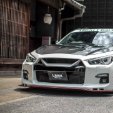Oil Control In Rb's For Circuit Drag Or Drift
Announcements
-
Similar Content
-
Latest Posts
-
Definitely didn't put a N/A cluster in instead? The speed sensor (location) is different in both cars.... I think. This will obviously stuff things up.
-
Nah not the throwout bearing, it's something internal. I already replaced the throwout bearing. Mechanic misdiagnosed my car and thought it was a spigot bearing, went to another bloke who said it was an input shaft bearing. (I replaced everything when I pulled out the gearbox but didn't open up the gearbox. In this video at timestamp 6:05 : Mine has the same sound min
-
It is definitely to space it out and away for clearance during compression, and possibly for spring clearance to upper arm. That latter would only be true for springs that are same-ish diameter to stockers, and so that probably doesn't apply to Teins or most other coilovers.
-
Yeah, a mechanic who knows these cars told me even if I get a brand new gearbox the noise will return but will be less noticeable. I've heard someone also they this noise came back after 3,000km on a new or reconditioned gearbox. It is pretty f**king annoying though just hearing groaning most of the time lol. I wonder if an aftermarket input shaft bearing would fix the problem or how they are built.
-
All RB gearbags, especially the big turbo box, have rollover noise. Mine certainly does. Always has. Sometimes is worse than others - no particular idea why, although it is probably temperature related. I have smurf jizz in mine and have had to have it in there from the first day the box went into teh car. It simply would not select gears with the engine on, on day one, with normal oil in there. And so, the blue stuff has probably ruined almost everything synchro related in the box. But it has taken 12 or 13 years to get to the point where I simply must replace the box. It has become increasingly baulky of late, which might be symptomatic of the way I've been driving it, as much as anything. I shall have to make some corrections when teh new box goes in. Input shaft bearing noise will decrease with clutch pedal pressed because the drive is removed. But yes, more often than not noises that work like that are associated with the throwout. It won't matter either way, new box will mean this one can be relegated to the parts pile.
-








Recommended Posts
Create an account or sign in to comment
You need to be a member in order to leave a comment
Create an account
Sign up for a new account in our community. It's easy!
Register a new accountSign in
Already have an account? Sign in here.
Sign In Now